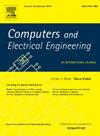Hybrid leader corona virus herd optimizer with multilevel thresholding techniques for foreground and background image segmentation
IF 4
3区 计算机科学
Q1 COMPUTER SCIENCE, HARDWARE & ARCHITECTURE
引用次数: 0
Abstract
In computer vision and image processing, an important role is given to image segmentation. As it can accurately extract and identify specific regions within an image. One of the key challenges that remain in this is achieving precise recognition and extraction of segmented regions. This can be solved by multilevel optimization techniques and this offers an effective solution. Recently, multilevel thresholding has emerged as an important technique for image segmentation as the separation of image pixels into various classes by the selection of optimal threshold values. However, when the number of thresholds increases, the computational complexity of multilevel thresholding also increases. To address this issue, various optimization algorithms are employed by the researchers. Thus, the Hybrid optimization techniques are integrated to enhance the overall efficacy of image segmentation processes. Thus, this research devised a Multithreshold-Hybrid Leader Coronavirus Herd Optimizer+kernel based Bayesian fuzzy clustering (Multithreshold-HLCHO+kernel-BFC) for the segmentation of foreground and background images. Here, the noise from the input image is removed using the Non-Local Means (NLM) filter and also the region of interest (ROI) extraction is done. The foreground and background image segmentation is done using the multilevel thresholding techniques, wherein threshold values are optimally generated utilizing HLCHO with multiobjectives like Renyi, Masi and Tsallic. Moreover, the integration of Hybrid Leader Based Optimization (HLBO) with Coronavirus Herd Immunity Optimizer (CHIO) forms the HLCHO. Also, the kernel-based BFC is employed for the segmentation of background and foreground images. Finally, the segmented output is achieved by fusing these two outputs using a fusion process. Additionally, Multithreshold-HLCHO+kernel-BFC acquired a maximum value of 0.891 for dice coefficient, 37.174 dB for PSNR, 0.918 for uniformity measure, and 0.297 for Mean Squared error (MSE).
混合领导者日冕病毒群优化器与多级阈值技术用于前景和背景图像分割
在计算机视觉和图像处理中,图像分割发挥着重要作用。因为它可以准确提取和识别图像中的特定区域。实现精确识别和提取分割区域是其中仍然存在的关键挑战之一。这可以通过多级优化技术来解决,它提供了一种有效的解决方案。最近,多级阈值技术作为一种重要的图像分割技术出现了,它通过选择最佳阈值将图像像素分成不同的类别。然而,当阈值数量增加时,多级阈值的计算复杂度也随之增加。为了解决这个问题,研究人员采用了各种优化算法。因此,混合优化技术被整合在一起,以提高图像分割过程的整体效率。因此,本研究设计了一种多阈值-混合领导冠状病毒群优化器+基于内核的贝叶斯模糊聚类(Multithreshold-HLCHO+kernel-BFC),用于前景和背景图像的分割。在此,使用非局部均值(NLM)滤波器去除输入图像中的噪声,并提取感兴趣区域(ROI)。使用多级阈值技术进行前景和背景图像分割,其中阈值是利用 HLCHO 与 Renyi、Masi 和 Tsallic 等多目标优化生成的。此外,基于混合领导优化(HLBO)与冠状病毒群免疫优化器(CHIO)的集成构成了 HLCHO。同时,基于核的 BFC 被用于分割背景和前景图像。最后,通过使用融合程序将这两个输出结果融合在一起,实现分割输出。此外,Multithreshold-HLCHO+kernel-BFC 的骰子系数最大值为 0.891,PSNR 为 37.174 dB,均匀性测量值为 0.918,平均平方误差 (MSE) 为 0.297。
本文章由计算机程序翻译,如有差异,请以英文原文为准。
求助全文
约1分钟内获得全文
求助全文
来源期刊

Computers & Electrical Engineering
工程技术-工程:电子与电气
CiteScore
9.20
自引率
7.00%
发文量
661
审稿时长
47 days
期刊介绍:
The impact of computers has nowhere been more revolutionary than in electrical engineering. The design, analysis, and operation of electrical and electronic systems are now dominated by computers, a transformation that has been motivated by the natural ease of interface between computers and electrical systems, and the promise of spectacular improvements in speed and efficiency.
Published since 1973, Computers & Electrical Engineering provides rapid publication of topical research into the integration of computer technology and computational techniques with electrical and electronic systems. The journal publishes papers featuring novel implementations of computers and computational techniques in areas like signal and image processing, high-performance computing, parallel processing, and communications. Special attention will be paid to papers describing innovative architectures, algorithms, and software tools.
 求助内容:
求助内容: 应助结果提醒方式:
应助结果提醒方式:


